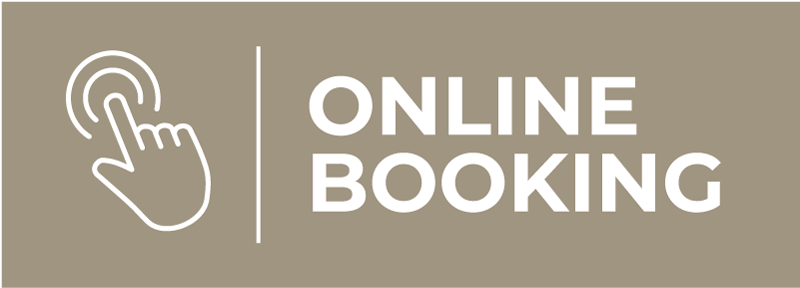Timing Chain Failure – 2.0 Diesel
Timing chain failure is a common occurrence on the 2 litre diesel engine found in the Range Rover Sport. Failure is generally caused by oil dilution from incomplete DPF regenerations or an insufficient oil change schedule. Timing chain failure will initially present itself as a rattling noise on cold start and sometimes a Restricted Performance message will appear on the dash.
If failing chains are not replaced in a timely manner, they can jump time or snap, causing the pistons to clash with the valves, effectively destroying the engine. The plastic guides that the chains run along can also cause problems too. As they wear over time, plastic particles from the guides can make their way into the engine oil pickup system blocking it, this can lead to spun crankshaft bearings causing a bottom end failure as well as turbo failures due to the lack of oil supply.
If you have failing timing chains the solution is to replace the chains along with new guides, idlers and tensioners.
To read more about this issue, please take a look at our write up on 2.0 Ingenium timing chains.
Turbo Failure – Diesel Models
Turbos can fail on all diesel Range Rover sports but this issue is most commonly seen on 2.0 Ingenium models. Total failure can be quite easy to spot, you may experience a drastic loss of power along with an engine management light and there will no longer be a sensation of boost when accelerating.
If a failure is caused by an oil leak on the turbo unit itself and that leak makes its way into the exhaust system, you may notice a large amount of blue smoke coming out the exhaust, the level of smoke will likely increase under acceleration as this will cause the turbocharger to spool harder.
Sometimes, a turbocharger will give also some advanced warning of failure, you may hear a siren like whining or whistling noise that gets progressively worse. This warning should be taken as a clear message that it’s time to book your Range Rover Sport in for repairs as soon as possible.
Replacement is often not as simple as removal and fitment of a new part, because any contamination in the oil delivery system could potentially cause a new turbo to fail shortly after installation. Because of this, when installing new turbos K Motors will perform a full engine flush and will recommend replacement of parts which we feel are at risk of contamination including intercoolers, feed pipes and filter screens.
Replace Turbocharger Unit Only | 2.0 Ingenium Diesel – Please see the K Motors Ingenium Turbocharger replacement guide for a fully costed estimate.
Replace Turbocharger Unit Only | 3.0 Diesel – Prices Start From P.O.A
Replace Turbocharger Unit Only | 4.4 V8 Diesel – Prices Start From P.O.A
To learn more about turbocharger issues on Jaguar and Land Rover vehicles, please take a look at our full article on turbochargers.
Piston Cooling Oil Jet Solenoid – 2.0 Diesel
The 2.0 diesel engine used on the to the Range Rover Sport L494 uses an electronically controlled solenoid to manage the oil flow to the piston cooling jets. These cooling jets help to keep piston temperatures under control when the engine is under load, reducing stresses and wear on the internals.
However, the electronic solenoid used for the jets is prone to failure, usually triggered by coolant leaking from the thermostat housing onto the solenoid body and connector.
For a diagnostic guide and replacement instructions along with a detailed estimate to replace a faulty Piston Cooling Oil Jet Solenoid, please see our dedicated page by hitting the button below.
AdBlue Issues – Diesel Models (2016 On)
Range Rover Sport diesel models from 2016 on are all equipped with SCR technology, this is a filtration system that uses Urea (AdBlue) to neutralize harmful Nitrogen Oxide (NOx) emissions coming through the exhaust. This system can be quite sensitive and expensive to maintain, for example, if the system runs out of AdBlue, the car will become immobilised until the system is topped up, but if overfilled, the NOx sensors can sometimes fail.
The SCR system could also start using (dosing) too much AdBlue leading to increased consumption if there is a fault in the system such as contamination or a sensor failure. If you have noticed an increase in AdBlue consumption or any other unusual behavior from the SCR system, it is advised to get vehicle booked in for diagnostics.
Diagnosing SCR System – £74.50 inc. VAT Per Hour
NOx Sensor Replacement – £610 inc. VAT
DPF Failure – Diesel Models
All diesel Range Rover Sport L494 models are equipped with a Diesel Particulate Filter (DPF). The DPF catches the soot emitted from the exhaust system and keeps it contained until it can be burnt off during DPF regeneration. Regeneration occurs passively when the vehicle is run up to temperature at high speed.
If the vehicle isn’t used for long runs at motorway speeds semi-regularly, the DPF will fill up and an active regeneration will take place, this is where extra fuel is injected into the engine to artificially raise the combustion temperature. Some owners may not realise this is happening and might switch the vehicle off before a regeneration is completed, meaning the system will still be blocked. This can cause the red DPF warning light to appear on the dash with the message “Exhaust Filter Full Visit Dealer”.
We often see this problem at K Motors and if diagnostics don’t not reveal any failed sensors we try to force a regeneration using our Autologic systems before proceeding to manually cleaning the DPF. Unfortunately though, sometimes an expensive new DPF will be the only option.
DPF Diagnostics – £74.50 inc. VAT Per Hour
Force DPF Regeneration – £110 inc. VAT
Manual DPF Clean & Regeneration – £300 inc. VAT
To read more on DPF systems, please take a look at our article on DPF Maintenance.
For a fitment guide and full estimate for replacing a DPF on the 2.0 Diesel model, please head to our DPF Failure page using the button below.
Throttle Body Failure – 3.0 Diesel
3 litre diesel Range Rover Sports are known to suffer from clogged throttle bodies which can then cause the “Restricted Performance” message to appear on the dash. If left unresolved, this can also prevent the engine from completing a DPF regeneration cycle, eventually triggering a ‘DPF Full’ red warning and causing further issues down the line.
Thankfully, throttle body replacement on these engines is straightforward, please hit the button below for symptoms, diagnostics and a step by step throttle body replacement guide with a fully costed estimate included.
Inlet Manifold / Rocker Cover Leaks – 3.0 Diesel
Inlet manifolds / rocker covers can also cause the Restricted Performance error message to appear. If the error comes up when the engine is under load it can point to a leaking gasket, but these engines are also known to crack the inlet manifolds as the original part is plastic.
For a detailed guide on what can cause the inlet manifolds to fail, the fault codes associated, a step by step repair procedure and estimate, please head to our repair guide using the button below.
Timing Belt – 3.0 Diesel
The timing belt on 3.0 diesel models needs to be changed every 7 years or 112,000 miles, whichever comes first. It is essential to make sure this is done on or before this interval, as if the timing belt snapped, The pistons will make contact with the valves causing severe damage.
For a step by step guide on timing belt replacement for the 3.0 V6 Diesel engines and a full K Motors estimate please hit the button below.
SRS Fault – Front Seat Wiring
Many Range Rover models from 2013 onwards come in with the air bag light warning light (SRS Fault) showing on the dashboard. Whilst airbag faults can be very concerning for owners, potentially indicating issues with the Airbag units themselves, we have found the main culprit is a small gauge wire running to a connector underneath the front seats.
Please head to our article on this issue which covers symptoms, causes, and how to permanently fix the most common SRS fault on Range Rover Sport models with Land Rover’s approved overlay wire repair method.
Front Suspension Arms
One of the most frequent tasks undertaken in our workshop is replacing the front lower suspension arms. These often go undetected until excess play is found in the the lower suspension bushes on an MOT. Whilst replacing the bushing is possible, it is much easier to just replace the complete arm that it is part of as it is very difficult to remove the worn bush and press in a new one perfectly straight.
Once new arms have been fitted it is important to perform a 4 wheel alignment (checking both toe and camber) otherwise you will find your Range Rover Sport is pulling to one side, crab walking when turning or is heavily and unevenly wearing your tyres reducing their lifespan significantly.
The main symptom of lower arm/bushing failure is a clonking/knocking sound from the front suspension, mostly noticeable at low speed, a quick way to verify the arms are the issue is to is to drive the vehicle forward and back at a slow speed applying the foot brake. If you hear a clonk as soon as the brakes are applied then it is very likely to be worn lower suspension arm bushes.
Replace Front Lower “Curved” Suspension Arm (OEM) – Please see our Curved lower arm replacement guide for a full costed estimate and step by step fitting instructions.
Replace Front Lower “Straight” Suspension Arm (OEM) – From £210 inc. VAT
Front Anti Roll Bar Bushes
Anti roll bars help keep a vehicle level when cornering, they have two rubber bushes around them (commonly referred to as D bushes) which are held by a clamp bolted to the subframe. These bushes wear over time and your steering will start to feel ‘woolly’, less responsive and less stable.
You may notice a clunk when cornering as the rubber can no longer support the roll bar under load. It may also feel like the vehicle is moving or jumping further opposite to the direction as you are cornering, these are all signs that the anti-roll bar bushes are worn and need replacing.
Replace Both Anti-Roll Bar Bushes – £291 inc. VAT
Front Suspension Tie Bars
The front suspension tie bars, also known as drop links, are the small upright rods with a ball joint on either end that connect the upper suspension arm to the front anti-roll bar and help keep the vehicle stable. A light metal rattle when travelling over speed bumps or potholes is generally an sign of worn drop link bushes. Replacement is straightforward, however it is common for the nut and thread on the ball joint ends to be corroded and in poor condition causing the ball joints to spin on themselves making them very difficult to remove.
Replace 1x Front Suspension Drop Link (OEM) – £118 inc. VAT
Front Hub And Bearing
Due to the weight of the Range Rover Sport and the stresses this causes, bearing failure is common on these vehicles. If you are hearing a grinding or rumbling noise from a corner the front that often gets worse when turning and louder the faster you travel, this often indicates a worn front wheel bearing. To check, jack up the noisy wheel and feel for play by rocking the wheel from top to bottom. If you can feel movement then the hub and bearing need to be replaced. Sometimes when rotating the wheel there will also be a perceived roughness as it moves.
It is important to replace the wheel bearing in question before it fails completely as the wheel may separate from the vehicle!
Replace Complete Front Hub And Bearing – P.O.A
Range Rover Sport Air Suspension Faults
Offering a great ride quality and excellent off road performance, the addition of 4-wheel air suspension to the Range Rover Sport has helped set it apart from its rivals. However, it is a complex system and faults are commonplace.
Most air suspension faults have the same symptoms, the warning is a yellow or red light in the shape of a car with an arrow over the top of it and it will show on the dashboard info screen with various different typed messages below. Selecting different height options may be unavailable and the vehicle may sit lower.
Symptoms could be one or more corners will not raise, the vehicle may be slow to raise and will only go to standard ride height and will not go in off road or access mode. The same symptoms and warnings can be caused by any of the following issues show below. We would always advise a full diagnostic check and calibration to narrow down the cause before removing or changing any parts.
Diagnostics – £74.50 inc. VAT Per Hour
Suspension Calibration – £74.50 inc. VAT
Replace Air Suspension Compressor (OEM) – P.O.A
Replace Suspension Compressor (Genuine LR) – P.O.A
Replace 1x Air Suspension Height Sensor (OEM) – P.O.A
Replace Air Suspension Valve Front (Genuine LR) – P.O.A
Replace Air Suspension Valve Rear (Genuine LR) – P.O.A
Replace Air Suspension Reservoir Tank (OEM) – P.O.A
Suspension Strut And Air Bag
If the vehicle suspension will not raise over one wheel and height sensors, valves and all the other faults listed above have been ruled out then it is likely to be a split or leak in the suspension air bag.
Rear suspension air bags are not mounted to the shock absorber and can be replaced seperately, unfortunately, this is not the case with the front struts, they come as a complete unit.
Replace 1x Front Suspension Strut And Air Bag (OEM) – P.O.A
Replace 1x Rear Suspension Air Bag (OEM) – P.O.A
Replace 1x Rear Suspension Strut And Air Bag (OEM) – P.O.A
Rear Wheel Hub And Bearing
A grinding or rumbling noise at the rear that gets worse the faster you travel often indicates a worn wheel bearing. To check, we would jack up the corner that the noise is coming from and check the wheel for play by rocking it from top to bottom. If there is any excess movement then the hub and bearing need to be replaced.
It is important to replace the wheel bearing in question before it fails completely as the wheel may separate from the vehicle!
Replace complete hub and bearing (SNR) – £375 inc. VAT
Brake Discs and Pads
Range Rover Sport vehicles are well known for using up brake discs and pads due their high power and weight. If low pads are spotted early before any damage is caused to the disc then just the pads can be changed. If brake pads have worn low and scored the discs then it is advisable to change both for optimum performance.
The average life of brake discs is around 32,000 miles, after this they are likely to be considered too thin and will have a lip around the edge where just fitting new pads will take too long to bed in and most likely will cause a squealing sound each time you apply the brakes. Generally, once the warning light has come on it is too late and discs will need to be changed. Once upon a time you could take your car to any garage to service the brakes but the Range Rover Sport L494 brake calipers are controlled by the ECU and require the latest specialist diagnostic equipment to be able to retract the pistons so that pads can be replaced.
Replacement Pads & Fitting Kit – Front – Starting From £295 inc. VAT
Replacement Discs, Pads & Fitting Kit – Front – Starting From £495 inc. VAT
Replacement Pads – Rear – Starting From £272 inc. VAT
Replacement Discs & Pads – Rear – Starting From £413 inc. VAT
Door Lock Replacement
As with most vehicles in the Land Rover range the door latches on the Range Rover Sport L494 are prone to failing, you may find that you cannot lock the vehicle or have activated the central locking but you are still able to open one of the doors. As all the parts of the mechanism are now in one sealed unit the complete latch will need replacing.
Replace Door Latch Mechanism (Genuine LR) – £285 inc. VAT




